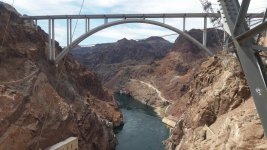OP
It seems that the weight of a dam and the weight of the water in the reservoir behind it has the possibility of causing earthquakes in areas of no KNOWN faults.
One source of this. Earthquakes Triggered by Dams | International Rivers
Hence my original post regarding changing water levels, though it was intended to be humorous especially the source Ripley's Believe It or not. Sort of like some of my college exam grades while attempting study of civil engineering. According to the professors I needed to take off my shoes when getting into higher math!
Thanks to Big Cholla, rwsmith, and others for providing serious information about dam structures !
One source of this. Earthquakes Triggered by Dams | International Rivers
Hence my original post regarding changing water levels, though it was intended to be humorous especially the source Ripley's Believe It or not. Sort of like some of my college exam grades while attempting study of civil engineering. According to the professors I needed to take off my shoes when getting into higher math!
Thanks to Big Cholla, rwsmith, and others for providing serious information about dam structures !

